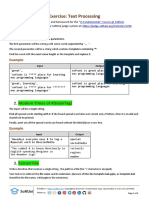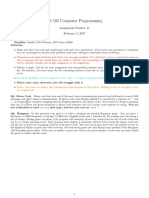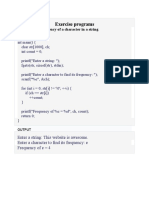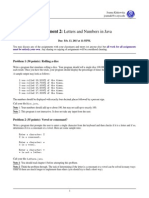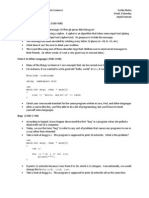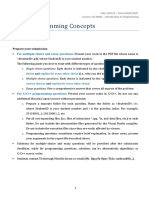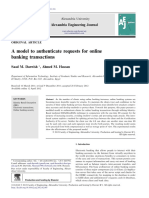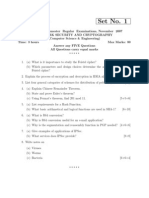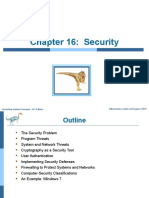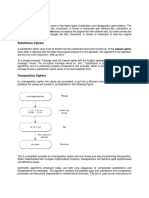This is CS50x
OpenCourseWare
David J. Malan (https://cs.harvard.edu/malan/)
malan@harvard.edu
(https://www.facebook.com/dmalan) (https://github.com/dmalan) (https://www.instagram.com/davidjmalan/)
(https://www.linkedin.com/in/malan/) (https://www.quora.com/pro le/David-J-Malan) (https://twitter.com/davidjmalan)
Problem Set 2
For this problem set, you’ll use CS50 IDE, a cloud-based programming environment.
What to Do
1. Go to ide.cs50.io (https://ide.cs50.io) and click “Sign in with GitHub” to access your CS50 IDE.
2. Submit Readability
3. Submit one of:
Caesar if feeling less comfortable
Substitution if feeling more comfortable
If you submit both Caesar and Substitution, we’ll record the higher of your two scores.
When to Do It
By 11:59pm on 31 December 2020.
Advice
Try out any of David’s programs from class via Week 2’s source code.
If you see any errors when compiling your code with make , focus rst on xing the very rst error you see, scrolling up as needed. If
unsure what it means, try asking help50 for help. For instance, if trying to compile hello , and
make readability
is yielding errors, try running
help50 make readability
instead!
1/2
�2/2
�This is CS50x
OpenCourseWare
David J. Malan (https://cs.harvard.edu/malan/)
malan@harvard.edu
(https://www.facebook.com/dmalan) (https://github.com/dmalan) (https://www.instagram.com/davidjmalan/)
(https://www.linkedin.com/in/malan/) (https://www.quora.com/pro le/David-J-Malan) (https://twitter.com/davidjmalan)
Readability
Implement a program that computes the approximate grade level needed to comprehend some text, per the below.
$ ./readability
Text: Congratulations! Today is your day. You're off to Great Places! You're off and away!
Grade 3
Reading Levels
According to Scholastic (https://www.scholastic.com/teachers/teaching-tools/collections/guided-reading-book-lists-for-every-level.html), E.B.
White’s “Charlotte’s Web” is between a second and fourth grade reading level, and Lois Lowry’s “The Giver” is between an eighth grade reading
level and a twelfth grade reading level. What does it mean, though, for a book to be at a “fourth grade reading level”?
Well, in many cases, a human expert might read a book and make a decision on the grade for which they think the book is most appropriate.
But you could also imagine an algorithm attempting to gure out what the reading level of a text is.
So what sorts of traits are characteristic of higher reading levels? Well, longer words probably correlate with higher reading levels. Likewise,
longer sentences probably correlate with higher reading levels, too. A number of “readability tests” have been developed over the years, to give
a formulaic process for computing the reading level of a text.
One such readability test is the Coleman-Liau index. The Coleman-Liau index of a text is designed to output what (U.S.) grade level is needed
to understand the text. The formula is:
index = 0.0588 * L - 0.296 * S - 15.8
Here, L is the average number of letters per 100 words in the text, and S is the average number of sentences per 100 words in the text.
Let’s write a program called readability that takes a text and determines its reading level. For example, if user types in a line from Dr. Seuss:
$ ./readability
Text: Congratulations! Today is your day. You're off to Great Places! You're off and away!
Grade 3
The text the user inputted has 65 letters, 4 sentences, and 14 words. 65 letters per 14 words is an average of about 464.29 letters per 100
words. And 4 sentences per 14 words is an average of about 28.57 sentences per 100 words. Plugged into the Coleman-Liau formula, and
rounded to the nearest whole number, we get an answer of 3: so this passage is at a third grade reading level.
Let’s try another one:
$ ./readability
Text: Harry Potter was a highly unusual boy in many ways. For one thing, he hated the summer holidays more than any other time of
Grade 5
This text has 214 letters, 4 sentences, and 56 words. That comes out to about 382.14 letters per 100 words, and 7.14 sentences per 100 words.
Plugged into the Coleman-Liau formula, we get a fth grade reading level.
1/5
�As the average number of letters and words per sentence increases, the Coleman-Liau index gives the text a higher reading level. If you were to
take this paragraph, for instance, which has longer words and sentences than either of the prior two examples, the formula would give the text
an eleventh grade reading level.
$ ./readability
Text: As the average number of letters and words per sentence increases, the Coleman-Liau index gives the text a higher reading l
Grade 11
Speci cation
Design and implement a program, readability , that computes the Coleman-Liau index of the text.
Implement your program in a le called readability.c in a directory called readability .
Your program must prompt the user for a string of text (using get_string ).
Your program should count the number of letters, words, and sentences in the text. You may assume that a letter is any lowercase
character from a to z or any uppercase character from A to Z , any sequence of characters separated by spaces should count as a word,
and that any occurrence of a period, exclamation point, or question mark indicates the end of a sentence.
Your program should print as output "Grade X" where X is the grade level computed by the Coleman-Liau formula, rounded to the
nearest integer.
If the resulting index number is 16 or higher (equivalent to or greater than a senior undergraduate reading level), your program should
output "Grade 16+" instead of giving the exact index number. If the index number is less than 1, your program should output "Before
Grade 1" .
Getting Started
Log into CS50 IDE (https://ide.cs50.io/) and then, in a terminal window, execute each of the below.
Execute cd to ensure that you’re in ~/ (i.e., your home directory).
Execute mkdir readability to make (i.e., create) a directory called readability in your home directory.
Execute cd readability to change into (i.e., open) your new readability directory.
Execute open readability.c to create and open in the editor an empty le called readability.c in your readability directory.
Getting User Input
Let’s rst write some C code that just gets some text input from the user, and prints it back out. Speci cally, write code in readability.c such
that when the user runs the program, they are prompted with "Text: " to enter some text.
The behavior of the resulting program should be like the below.
$ ./readability
Text: In my younger and more vulnerable years my father gave me some advice that I've been turning over in my mind ever since.
In my younger and more vulnerable years my father gave me some advice that I've been turning over in my mind ever since.
Letters
Now that you’ve collected input from the user, let’s begin to analyze that input by rst counting the number of letters that show up in the text.
Modify readability.c so that, instead of printing out the literal text itself, it instead prints out a count of the number of letters in the text.
The behavior of the resulting program should be like the below.
$ ./readability
Text: Alice was beginning to get very tired of sitting by her sister on the bank, and of having nothing to do: once or twice she
235 letter(s)
Letters can be any uppercase or lowercase alphabetic characters, but shouldn’t include any punctuation, digits, or other symbols.
You can reference https://man.cs50.io/ (https://man.cs50.io/) for standard library functions that may help you here! You may also nd that
writing a separate function, like count_letters , may be useful to keep your code organized.
2/5
�Words
The Coleman-Liau index cares not only about the number of letters, but also the number of words in a sentence. For the purpose of this
problem, we’ll consider any sequence of characters separated by a space to be a word (so a hyphenated word like "sister-in-law" should be
considered one word, not three).
Modify readability.c so that, in addition to printing out the number of letters in the text, also prints out the number of words in the text.
You may assume that a sentence will not start or end with a space, and you may assume that a sentence will not have multiple spaces in a row.
The behavior of the resulting program should be like the below.
$ ./readability
Text: It was a bright cold day in April, and the clocks were striking thirteen. Winston Smith, his chin nuzzled into his breast i
250 letter(s)
55 word(s)
Sentences
The last piece of information that the Coleman-Liau formula cares about, in addition to the number of letters and words, is the number of
sentences. Determining the number of sentences can be surprisingly trickly. You might rst imagine that a sentence is just any sequence of
characters that ends with a period, but of course sentences could end with an exclamation point or a question mark as well. But of course, not
all periods necessarily mean the sentence is over. For instance, consider the sentence below.
Mr. and Mrs. Dursley, of number four Privet Drive, were proud to say that they were perfectly normal, thank you very much.
This is just a single sentence, but there are three periods! For this problem, we’ll ask you to ignore that subtlety: you should consider any
sequence of characters that ends with a . or a ! or a ? to be a sentence (so for the above “sentence”, you may count that as three
sentences). In practice, sentence boundary detection needs to be a little more intelligent to handle these cases, but we’ll not worry about that
for now.
Modify readability.c so that it also now prints out the number of sentences in the text.
The behavior of the resulting program should be like the below.
$ ./readability
Text: When he was nearly thirteen, my brother Jem got his arm badly broken at the elbow. When it healed, and Jem's fears of never
295 letter(s)
70 word(s)
3 sentence(s)
Putting it All Together
Now it’s time to put all the pieces together! Recall that the Coleman-Liau index is computed using the formula:
index = 0.0588 * L - 0.296 * S - 15.8
where L is the average number of letters per 100 words in the text, and S is the average number of sentences per 100 words in the text.
Modify readability.c so that instead of outputting the number of letters, words, and sentences, it instead outputs the grade level as given by
the Coleman-Liau index (e.g. "Grade 2" or "Grade 8" ). Be sure to round the resulting index number to the nearest whole number!
If the resulting index number is 16 or higher (equivalent to or greater than a senior undergraduate reading level), your program should output
"Grade 16+" instead of giving the exact index number. If the index number is less than 1, your program should output "Before Grade 1" .
Hints
Walkthrough
3/5
� Note that while the walkthrough illustrates that words may be separated by more than one space, you may assume, per the speci cations
above, that no sentences will contain more than one space in a row.
How to Test Your Code
Try running your program on the following texts.
One fish. Two fish. Red fish. Blue fish. (Before Grade 1)
Would you like them here or there? I would not like them here or there. I would not like them anywhere. (Grade 2)
Congratulations! Today is your day. You're off to Great Places! You're off and away! (Grade 3)
Harry Potter was a highly unusual boy in many ways. For one thing, he hated the summer holidays more than any other time of
year. For another, he really wanted to do his homework, but was forced to do it in secret, in the dead of the night. And he
also happened to be a wizard. (Grade 5)
In my younger and more vulnerable years my father gave me some advice that I've been turning over in my mind ever since.
(Grade 7)
Alice was beginning to get very tired of sitting by her sister on the bank, and of having nothing to do: once or twice she had
peeped into the book her sister was reading, but it had no pictures or conversations in it, "and what is the use of a book,"
thought Alice "without pictures or conversation?" (Grade 8)
When he was nearly thirteen, my brother Jem got his arm badly broken at the elbow. When it healed, and Jem's fears of never
being able to play football were assuaged, he was seldom self-conscious about his injury. His left arm was somewhat shorter
than his right; when he stood or walked, the back of his hand was at right angles to his body, his thumb parallel to his
thigh. (Grade 8)
There are more things in Heaven and Earth, Horatio, than are dreamt of in your philosophy. (Grade 9)
It was a bright cold day in April, and the clocks were striking thirteen. Winston Smith, his chin nuzzled into his breast in
an effort to escape the vile wind, slipped quickly through the glass doors of Victory Mansions, though not quickly enough to
prevent a swirl of gritty dust from entering along with him. (Grade 10)
A large class of computational problems involve the determination of properties of graphs, digraphs, integers, arrays of
integers, finite families of finite sets, boolean formulas and elements of other countable domains. (Grade 16+)
Execute the below to evaluate the correctness of your code using check50 . But be sure to compile and test it yourself as well!
check50 cs50/problems/2020/x/readability
Execute the below to evaluate the style of your code using style50 .
style50 readability.c
4/5
�How to Submit
Execute the below, logging in with your GitHub username and password when prompted. For security, you’ll see asterisks ( * ) instead of the
actual characters in your password.
submit50 cs50/problems/2020/x/readability
5/5
�This is CS50x
OpenCourseWare
David J. Malan (https://cs.harvard.edu/malan/)
malan@harvard.edu
(https://www.facebook.com/dmalan) (https://github.com/dmalan) (https://www.instagram.com/davidjmalan/)
(https://www.linkedin.com/in/malan/) (https://www.quora.com/pro le/David-J-Malan) (https://twitter.com/davidjmalan)
Caesar
Implement a program that encrypts messages using Caesar’s cipher, per the below.
$ ./caesar 13
plaintext: HELLO
ciphertext: URYYB
Background
Supposedly, Caesar (yes, that Caesar) used to “encrypt” (i.e., conceal in a reversible way) con dential messages by shifting each letter therein by
some number of places. For instance, he might write A as B, B as C, C as D, …, and, wrapping around alphabetically, Z as A. And so, to say
HELLO to someone, Caesar might write IFMMP. Upon receiving such messages from Caesar, recipients would have to “decrypt” them by shifting
letters in the opposite direction by the same number of places.
The secrecy of this “cryptosystem” relied on only Caesar and the recipients knowing a secret, the number of places by which Caesar had shifted
his letters (e.g., 1). Not particularly secure by modern standards, but, hey, if you’re perhaps the rst in the world to do it, pretty secure!
Unencrypted text is generally called plaintext. Encrypted text is generally called ciphertext. And the secret used is called a key.
To be clear, then, here’s how encrypting HELLO with a key of 1 yields IFMMP :
plaintext H E L L O
+ key 1 1 1 1 1
= ciphertext I F M M P
More formally, Caesar’s algorithm (i.e., cipher) encrypts messages by “rotating” each letter by k positions. More formally, if p is some plaintext
(i.e., an unencrypted message), pi is the ith character in p, and k is a secret key (i.e., a non-negative integer), then each letter, ci, in the
ciphertext, c, is computed as
ci = (pi + k) % 26
wherein % 26 here means “remainder when dividing by 26.” This formula perhaps makes the cipher seem more complicated than it is, but it’s
really just a concise way of expressing the algorithm precisely. Indeed, for the sake of discussion, think of A (or a) as 0, B (or b) as 1, …, H (or h)
as 7, I (or i) as 8, …, and Z (or z) as 25. Suppose that Caesar just wants to say Hi to someone con dentially using, this time, a key, k, of 3. And so
his plaintext, p, is Hi, in which case his plaintext’s rst character, p0, is H (aka 7), and his plaintext’s second character, p1, is i (aka 8). His
ciphertext’s rst character, c0, is thus K, and his ciphertext’s second character, c1, is thus L. Can you see why?
Let’s write a program called caesar that enables you to encrypt messages using Caesar’s cipher. At the time the user executes the program,
they should decide, by providing a command-line argument, on what the key should be in the secret message they’ll provide at runtime. We
shouldn’t necessarily assume that the user’s key is going to be a number; though you may assume that, if it is a number, it will be a positive
integer.
Here are a few examples of how the program might work. For example, if the user inputs a key of 1 and a plaintext of HELLO :
$ ./caesar 1
plaintext: HELLO
ciphertext: IFMMP
1/5
�Here’s how the program might work if the user provides a key of 13 and a plaintext of hello, world :
$ ./caesar 13
plaintext: hello, world
ciphertext: uryyb, jbeyq
Notice that neither the comma nor the space were “shifted” by the cipher. Only rotate alphabetical characters!
How about one more? Here’s how the program might work if the user provides a key of 13 again, with a more complex plaintext:
$ ./caesar 13
plaintext: be sure to drink your Ovaltine
ciphertext: or fher gb qevax lbhe Binygvar
Why?
Notice that the case of the original message has been preserved. Lowercase letters remain lowercase, and uppercase letters remain uppercase.
And what if a user doesn’t cooperate?
$ ./caesar HELLO
Usage: ./caesar key
Or really doesn’t cooperate?
$ ./caesar
Usage: ./caesar key
Or even…
$ ./caesar 1 2 3
Usage: ./caesar key
Speci cation
Design and implement a program, caesar , that encrypts messages using Caesar’s cipher.
Implement your program in a le called caesar.c in a directory called caesar .
Your program must accept a single command-line argument, a non-negative integer. Let’s call it k for the sake of discussion.
If your program is executed without any command-line arguments or with more than one command-line argument, your program should
print an error message of your choice (with printf ) and return from main a value of 1 (which tends to signify an error) immediately.
If any of the characters of the command-line argument is not a decimal digit, your program should print the message Usage: ./caesar
key and return from main a value of 1 .
Do not assume that k will be less than or equal to 26. Your program should work for all non-negative integral values of k less than 2^31 -
26. In other words, you don’t need to worry if your program eventually breaks if the user chooses a value for k that’s too big or almost too
big to t in an int . (Recall that an int can over ow.) But, even if k is greater than 26, alphabetical characters in your program’s input
should remain alphabetical characters in your program’s output. For instance, if k is 27, A should not become [ even though [ is 27
positions away from A in ASCII, per http://www.asciichart.com/[asciichart.com]; A should become B , since B is 27 positions away from
A , provided you wrap around from Z to A .
Your program must output plaintext: (without a newline) and then prompt the user for a string of plaintext (using get_string ).
Your program must output ciphertext: (without a newline) followed by the plaintext’s corresponding ciphertext, with each alphabetical
character in the plaintext “rotated” by k positions; non-alphabetical characters should be outputted unchanged.
Your program must preserve case: capitalized letters, though rotated, must remain capitalized letters; lowercase letters, though rotated,
must remain lowercase letters.
After outputting ciphertext, you should print a newline. Your program should then exit by returning 0 from main .
How to begin? Let’s approach this problem one step at a time.
Pseudocode 2/5
�Pseudocode
First, write some pseudocode that implements this program, even if not (yet!) sure how to write it in code. There’s no one right way to write
pseudocode, but short English sentences suf ce. Recall how we wrote pseudocode for nding Mike Smith
(https://cdn.cs50.net/2018/fall/lectures/0/lecture0.pdf). Odds are your pseudocode will use (or imply using!) one or more functions, conditions,
Boolean expressions, loops, and/or variables.
Spoiler
Counting Command-Line Arguments
Whatever your pseudocode, let’s rst write only the C code that checks whether the program was run with a single command-line argument
before adding additional functionality.
Speci cally, modify caesar.c in such a way that: if the user provides exactly one command-line argument, it prints Success ; if the user
provides no command-line arguments, or two or more, it prints Usage: ./caesar key . Remember, since this key is coming from the command
line at runtime, and not via get_string , we don’t have an opportunity to re-prompt the user. The behavior of the resulting program should be
like the below.
$ ./caesar 20
Success
or
$ ./caesar
Usage: ./caesar key
or
$ ./caesar 1 2 3
Usage: ./caesar key
Hints
Accessing the Key
Now that your program is (hopefully!) accepting input as prescribed, it’s time for another step.
Recall that in our program, we must defend against users who technically provide a single command-line argument (the key), but provide
something that isn’t actually an integer, for example:
$ ./caesar xyz
Before we start to analyze the key for validity, though, let’s make sure we can actually read it. Further modify caesar.c such that it not only
checks that the user has provided just one command-line argument, but after verifying that, prints out that single command-line argument. So,
for example, the behavior might look like this:
$ ./caesar 20
Success
20
Hints
Validating the Key
Now that you know how to read the key, let’s analyze it. Modify caesar.c such that instead of printing out the command-line argument
provided, your program instead checks to make sure that each character of that command line argument is a decimal digit (i.e., 0 , 1 , 2 , etc.)
and, if any of them are not, terminates after printing the message Usage: ./caesar key . But if the argument consists solely of digit characters,
you should convert that string (recall that argv is an array of strings, even if those strings happen to look like numbers) to an actual integer,
and print out the integer, as via %i with printf . So, for example, the behavior might look like this:
3/5
� $ ./caesar 20
Success
20
or
$ ./caesar 20x
Usage: ./caesar key
Hints
Peeking Underneath the Hood
As human beings it’s easy for us to intuitively understand the formula described above, inasmuch as we can say “H + 1 = I”. But can a computer
understand that same logic? Let’s nd out. For now, we’re going to temporarily ignore the key the user provided and instead prompt the user for
a secret message and attempt to shift all of its characters by just 1.
Extend the functionality of caesar.c such that, after validating the key, we prompt the user for a string and then shift all of its characters by 1,
printing out the result. We can also at this point probably remove the line of code we wrote earlier that prints Success . All told, this might
result in this behavior:
$ ./caesar 1
plaintext: hello
ciphertext: ifmmp
Hints
Your Turn
Now it’s time to tie everything together! Instead of shifting the characters by 1, modify caesar.c to instead shift them by the actual key value.
And be sure to preserve case! Uppercase letters should stay uppercase, lowercase letters should stay lowercase, and characters that aren’t
alphabetical should remain unchanged.
Hints
Walkthrough
H t T tY C d 4/5
�How to Test Your Code
Execute the below to evaluate the correctness of your code using check50 . But be sure to compile and test it yourself as well!
check50 cs50/problems/2020/x/caesar
Execute the below to evaluate the style of your code using style50 .
style50 caesar.c
How to Submit
Execute the below, logging in with your GitHub username and password when prompted. For security, you’ll see asterisks ( * ) instead of the
actual characters in your password.
submit50 cs50/problems/2020/x/caesar
5/5
�This is CS50x
OpenCourseWare
David J. Malan (https://cs.harvard.edu/malan/)
malan@harvard.edu
(https://www.facebook.com/dmalan) (https://github.com/dmalan) (https://www.instagram.com/davidjmalan/)
(https://www.linkedin.com/in/malan/) (https://www.quora.com/pro le/David-J-Malan) (https://twitter.com/davidjmalan)
Substitution
Implement a program that implements a substitution cipher, per the below.
$ ./substitution JTREKYAVOGDXPSNCUIZLFBMWHQ
plaintext: HELLO
ciphertext: VKXXN
Background
In a substitution cipher, we “encrypt” (i.e., conceal in a reversible way) a message by replacing every letter with another letter. To do so, we use
a key: in this case, a mapping of each of the letters of the alphabet to the letter it should correspond to when we encrypt it. To “decrypt” the
message, the receiver of the message would need to know the key, so that they can reverse the process: translating the encrypt text (generally
called ciphertext) back into the original message (generally called plaintext).
A key, for example, might be the string NQXPOMAFTRHLZGECYJIUWSKDVB . This 26-character key means that A (the rst letter of the alphabet)
should be converted into N (the rst character of the key), B (the second letter of the alphabet) should be converted into Q (the second
character of the key), and so forth.
A message like HELLO , then, would be encrypted as FOLLE , replacing each of the letters according to the mapping determined by the key.
Let’s write a program called substitution that enables you to encrypt messages using a substitution cipher. At the time the user executes the
program, they should decide, by providing a command-line argument, on what the key should be in the secret message they’ll provide at
runtime.
Here are a few examples of how the program might work. For example, if the user inputs a key of YTNSHKVEFXRBAUQZCLWDMIPGJO and a plaintext
of HELLO :
$ ./substitution YTNSHKVEFXRBAUQZCLWDMIPGJO
plaintext: HELLO
ciphertext: EHBBQ
Here’s how the program might work if the user provides a key of VCHPRZGJNTLSKFBDQWAXEUYMOI and a plaintext of hello, world :
$ ./substitution VCHPRZGJNTLSKFBDQWAXEUYMOI
plaintext: hello, world
ciphertext: jrssb, ybwsp
Notice that neither the comma nor the space were substituted by the cipher. Only substitute alphabetical characters! Notice, too, that the case
of the original message has been preserved. Lowercase letters remain lowercase, and uppercase letters remain uppercase.
Whether the characters in the key itself are uppercase or lowercase doesn’t matter. A key of VCHPRZGJNTLSKFBDQWAXEUYMOI is functionally
identical to a key of vchprzgjntlskfbdqwaxeuymoi (as is, for that matter, VcHpRzGjNtLsKfBdQwAxEuYmOi ).
And what if a user doesn’t provide a valid key?
$ ./substitution ABC
Key must contain 26 characters.
1/3
�Or really doesn’t cooperate?
$ ./substitution
Usage: ./substitution key
Or even…
$ ./substitution 1 2 3
Usage: ./substitution key
Speci cation
Design and implement a program, substitution , that encrypts messages using a substitution cipher.
Implement your program in a le called substitution.c in a directory called `substitution.
Your program must accept a single command-line argument, the key to use for the substitution. The key itself should be case-insensitive,
so whether any character in the key is uppercase or lowercase should not affect the behavior of your program.
If your program is executed without any command-line arguments or with more than one command-line argument, your program should
print an error message of your choice (with printf ) and return from main a value of 1 (which tends to signify an error) immediately.
If the key is invalid (as by not containing 26 characters, containing any character that is not an alphabetic character, or not containing each
letter exactly once), your program should print an error message of your choice (with printf ) and return from main a value of 1
immediately.
Your program must output plaintext: (without a newline) and then prompt the user for a string of plaintext (using get_string ).
Your program must output ciphertext: (without a newline) followed by the plaintext’s corresponding ciphertext, with each alphabetical
character in the plaintext substituted for the corresponding character in the ciphertext; non-alphabetical characters should be outputted
unchanged.
Your program must preserve case: capitalized letters must remain capitalized letters; lowercase letters must remain lowercase letters.
After outputting ciphertext, you should print a newline. Your program should then exit by returning 0 from main .
Walkthrough
How to Test Your Code
Execute the below to evaluate the correctness of your code using check50 . But be sure to compile and test it yourself as well!
2/3
� check50 cs50/problems/2020/x/substitution
Execute the below to evaluate the style of your code using style50 .
style50 substitution.c
How to Submit
Execute the below, logging in with your GitHub username and password when prompted. For security, you’ll see asterisks ( * ) instead of the
actual characters in your password.
submit50 cs50/problems/2020/x/substitution
3/3













